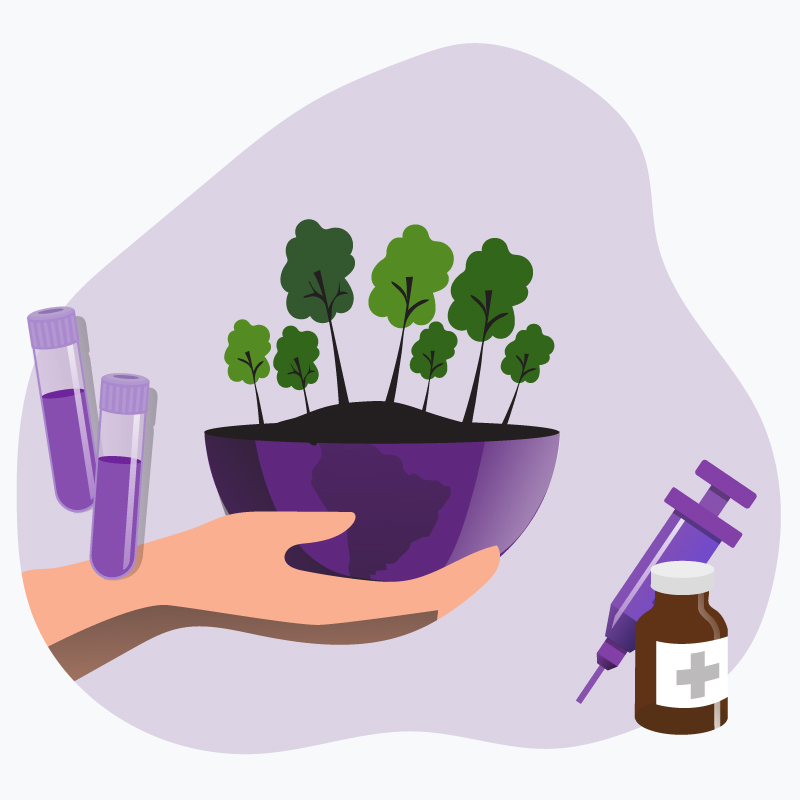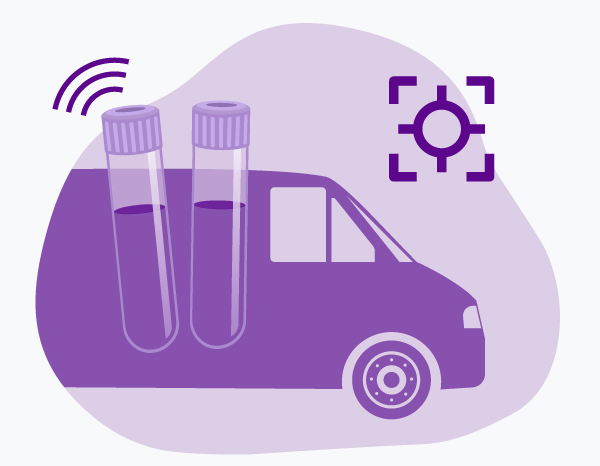Sustainability in Healthcare – More Than Climate Neutrality
The healthcare sector is responsible for 4.4% of global net emissions, and in Germany, this figure rises to 5.2% [Source: Health care climate footprint report | Health Care Without Harm (Global)]. Medical devices and their associated supply chains account for the largest share, while the remaining percentage is primarily due to direct and indirect emissions [Source: Healthcare sector footprint]. As a result, hospitals’ sustainability efforts mainly focus on efficient waste management and increased energy efficiency. However, sustainable changes in medicine go beyond climate-neutral actions and also encompass social justice, ecological sustainability, and economic efficiency [Source: Sustainability (sustainable development)].
Sustainability Effects Through Targeted Diagnosis
Although secondary effects (e.g., inefficient treatment pathways, unnecessary examinations, and therapeutic trials) are difficult to quantify, it is assumed that they have an even greater impact on sustainability in healthcare. The effects of precise diagnosis on these dimensions are outlined below.
1. Ecological Viability: Saving Resources – Reducing Burdens
A more precise diagnosis leads to fewer unnecessary tests, repeated visits, and redundant treatments.
- Reduced use of medical resources: Early diagnosis enables more efficient treatment, reducing unnecessary testing, referrals, and treatments as well as avoiding trial-and-error therapies.
- Less medical waste: Overtreatment and unnecessary procedures generate disposable products such as cannulas, test kits, or packaging waste. Targeted diagnosis significantly reduces this waste.
- Lower energy consumption: Early interventions reduce the need for energy-intensive measures such as hospital stays, surgeries, and intensive care treatments.
2. Economic Efficiency: Cost Savings and Greater Benefits
- Lower healthcare costs: Fewer hospitalizations, fewer unnecessary tests, and more targeted medication use reduce financial burdens on the healthcare system.
- Increased productivity: Early diagnosis leads to shorter disease courses and fewer absences, increasing both individual and overall economic productivity.
3. Social Justice: Democratization of High-Quality Healthcare
Chronic and severe diseases cause high costs and long-term burdens on patients. However, if a disease is detected early, targeted prevention and therapy approaches can be applied.
- Improved patient health: Long-term reduction in treatment efforts due to slower disease progression (fewer severe complications or chronic courses) and shorter sick leave periods.
- Equal access to healthcare: Early diagnoses enable faster treatment regardless of the socioeconomic status of the patient. Particularly vulnerable groups benefit from better healthcare and prevention since chronic diseases and severe courses often hit socially disadvantaged groups harder. Early diagnosis can prevent long-term consequences and improve quality of life.
- Relief for caregiving relatives: More precise diagnoses and targeted treatments prevent avoidable care cases and reduce the burden on families and caregivers.
Efficient use of medical resources not only relieves the environment but also the healthcare system and affected patients.
AI-Based Diagnostic Systems as an Instrument for Sustainability
Artificial intelligence can make diagnoses faster, more precise, and more resource-efficient. Through data analysis and decision support, AI helps optimize treatment processes and thus make healthcare more sustainable.
Optimized Treatment Pathways Through AI-Supported Clinical Decision Support
A key advantage of CDSS is the ability to optimize treatment pathways and tailor them individually to each patient.
Targeted diagnostics and therapy: AI systems assist physicians in making well-founded diagnoses and selecting the optimal treatment path based on real-time data and evidence-based guidelines. This promotes equal access to healthcare and reduces disparities.
Avoidance of unnecessary diagnostic steps: CDSS reduces redundant examinations and tests by intelligently evaluating existing patient data. For example, unnecessary laboratory orders can be reduced by optimally using diagnostic resources for each patient. Instead of redundant tests, multi-purpose testing is suggested.
Automated risk assessments: By analyzing disease patterns, AI can provide early warnings of potential complications and recommend preventive measures.
Efficiency Gains Through AI-Based Diagnostics
AI can automatically evaluate clinical and laboratory diagnostics data and identify potential disease patterns earlier than human diagnosticians. This helps detect diseases earlier and provide targeted therapy recommendations.
Radiology: AI detects the smallest abnormalities in imaging such as CTs or MRIs earlier and more reliably.
Laboratory diagnostics: AI identifies patterns in specimen test results at an early stage, e.g., in sepsis or cancer diagnostics.
Genetics & precision medicine: AI analyzes genetic data to enable personalized diagnoses and therapies.
Relieving the Medical Workforce
A sustainable healthcare system must also improve working conditions for physicians and nurses. AI-based clinical decision support can automate time-consuming (administrative) routine tasks and free up time for direct patient care. For example, automated documentation and LLM-supported physician report generation save time and allow for more focus on patient care.
Sustainability Starts With Diagnosis
A sustainable healthcare system needs more than just eco-friendly hospital buildings—it needs efficient and targeted diagnostics and intelligent diagnostic systems. AI-powered systems can contribute to making medical resources more sustainable, avoiding unnecessary treatments, optimizing treatment pathways, and improving patient care. Ultimately, it’s about more than just ecology: A precise, efficient, and fair healthcare system leads to better medical outcomes—and a more sustainable future.



